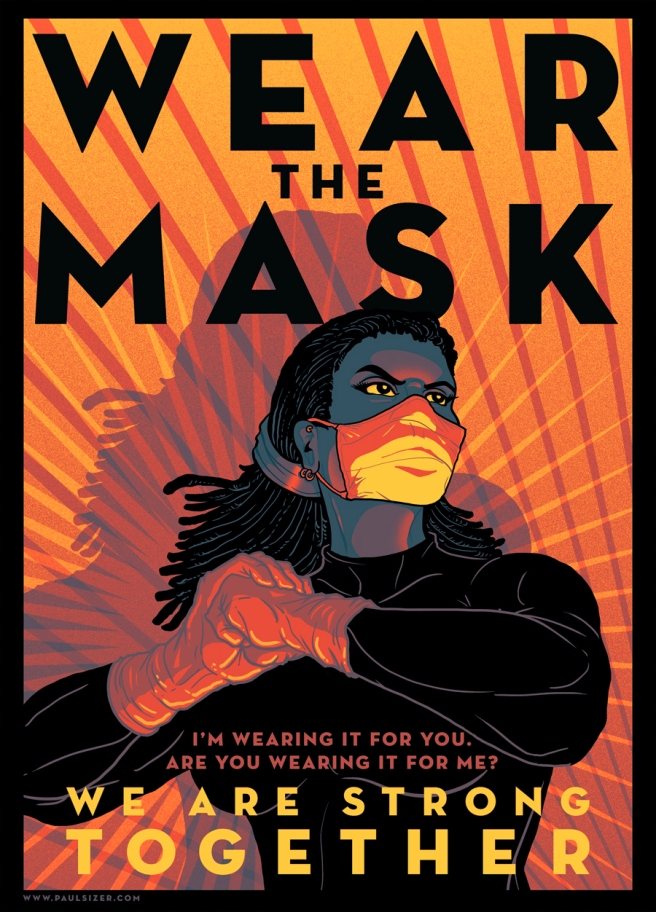As the British government continues to fumble its way through its response to the covid-19 pandemic, it is becoming increasingly apparent that if our leaders cannot provide guidance on how to protect ourselves and one another we will have to make our own judgements. We absolutely should not be in this position, with the government passing off responsibility on to the public in order to avoid the blame for their failure to control the disease, but we’re here now so we have to do our best under the circumstances.
After a great deal of uncertainty in the early stages of the pandemic, the CDC and the WHO now recommend that people wear fabric face coverings in public. Scotland has experienced consistently better covid outcomes than England after departing from the official Westminster advice, and is now mandating mask wearing in in public places from next week. While face masks don’t necessarily protect the wearer directly, they do intercept exhaled virus droplets from potentially presymptomatic people, and evidence is growing that by doing so they can reduce the total amount of virus transmission in society.
Countries that have mandated face coverings have generally had better covid outcomes than those that haven’t, although it is impossible to know whether this is an example of causation (mandating face coverings effectively reduces transmission) or correlation (countries that generally mount a competent, effective response mandate face coverings as part of it). A recent study found that in countries with cultural norms or government policies supporting public mask-wearing, per-capita coronavirus mortality in the early stages of the outbreak increased on average by just 8% each week, as compared with 54% each week in other countries. Another found that the rate of growth in covid-19 infections slowed after the introduction of mask mandates in sixteen US states, and the reduction became more marked as time went on.
Evidence is also coming in that the predicted covid spike following widespread BLM protests in the US hasn’t materialised. We still can’t be sure why this is, it could be due to the majority of protesters being in a less susceptible age bracket but it’s been hypothesised that this is due to the widespread use of masks at these protests. Probably the only way to resolve the issue would be to compare outcomes with a control gathering of an equal size that didn’t use masks, a Trump rally for example, but it would be extremely difficult to match demographics to make it a fair experiment!
Finally, a recent modelling study showed that widespread mask use could dramatically reduce covid transmission even without lockdowns. As with all modelling, the results are only as good as the estimates that can be plugged into the model, and with covid-19 there’s a lot we still don’t know both about the virus and about human behaviour, but nonetheless the results are encouraging.
Some uncertainties remain however. While the various conspiracy theories proliferating on social media that masks cause oxygen deprivation have been widely debunked, there are legitimate concerns that masks may give people a false sense of security, making them less inclined to practice social distancing, and that they may make people touch their faces more thereby increasing transmission. I’ve certainly seen a depressing number of people in my town wearing masks under their chins or removing them frequently to speak, eat or smoke. The WHO has created a number of helpful videos on how to correctly and safely use a face mask, which I hope to see widely circulated, but I feel confident in my own ability to follow these guidelines. Having weighed all the above points I have therefore made the personal decision to wear a face mask in public outdoor places such as shops.
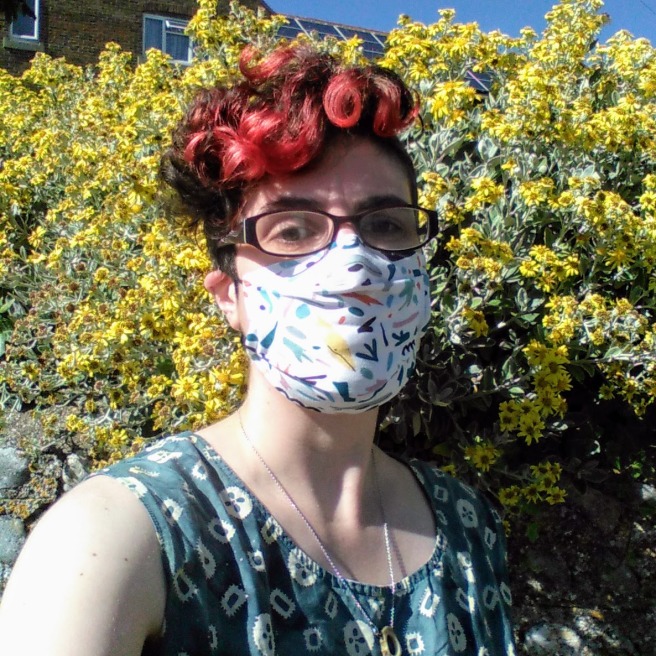
But it’s important to acknowledge that wearing a mask isn’t a simple action. I wear glasses and the first mask design I tried fogged them until I couldn’t see. I tried going without for a while, which I can do while walking around outdoors if I don’t have to be able to see in particular detail, but which isn’t an option available to everyone and isn’t really a viable long term solution. I had to buy three different designs of masks, as well as a bag of aluminium “nose wires” to customise them before I found a design I could wear while still being able to see, and that cost money. My girlfriend and I have been extremely lucky to be in jobs we can do from home where our incomes haven’t fallen during lockdown, but most households haven’t been so fortunate. And even for us some expenses have gone up during lockdown – food purchased from independent shops while avoiding supermarkets is more expensive, and the cost of cleaning products has gone up noticeably due to shortages. It’s simply not viable to expect everyone to spend £40 on finding a mask design that works for them.
Secondly they’re uncomfortable. They hurt your ears after a while – I’m lucky not to have particular sensory sensitivities in that regard, but I’m sure some people would find it more of a struggle. Something I do struggle with is breathing heavily – they do restrict your access to air and I find myself breathing through my mouth instead of my nose when wearing them. At the risk of providing too much information this does leave them unpleasantly damp after a while, and I do worry that this may counter-productively be making me exhale more virus particles than I would if I could get enough air through my nose. And I don’t have any underlying respiratory conditions, some people with asthma find breathing while wearing a mask impossible, and have to worry about being shamed for not doing so on public transport on top of their increased vulnerability to covid. Masks also simply can’t be made to work for everyone – my girlfriend has chosen not to wear one because she suffers from bad hayfever and has to keep taking it off to blow her nose anyway.
They also make communication difficult, not just for those who rely on lipreading and are campaigning for the adoption of transparent masks but for hearing people who struggle with muffled voices. This has other knock-on accessibility consequences for people with sensory sensitivities – I usually wear earplugs in noisy environments like supermarkets to reduce the noise to a level that isn’t painful, but have had to stop because I now can’t hear masked cashiers at all.
Finally they can appear intimidating- my girlfriend’s friend’s young children are scared by people in masks, which must be an incredibly difficult issue to deal with on top of all the stress lockdown has put on parents trying to work from home without childcare. My brother, a sturdily built man of six foot four, agonised over whether to wear a mask and if so what type in order not to appear threatening. And for some people, avoiding being perceived as threatening is not just a matter of courtesy it could potentially be a matter of life and death. A Black friend of my mother’s feels the need to introduce herself to the shop keeper in every shop she enters wearing a mask to reassure them that she isn’t going to rob them. As recent events have shown, it’s very dangerous to be a Black person perceived as a threat in our society.
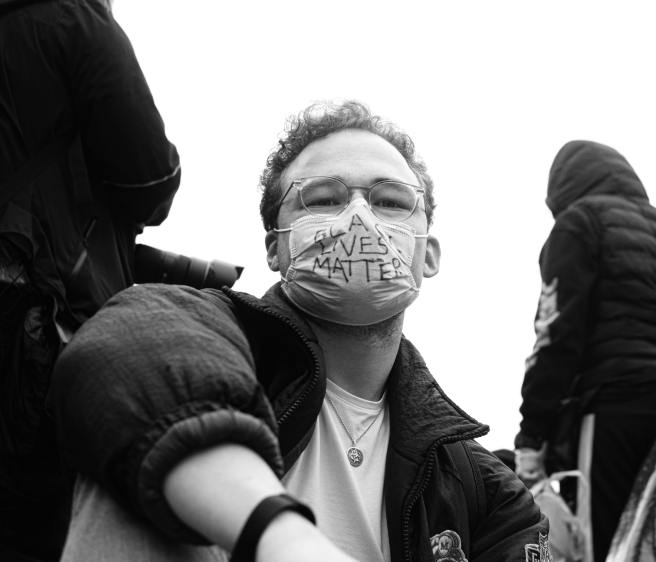
With “Super Saturday”’s grand reopening fast approaching and coronovirus no longer making it to the top of newspaper headlines, in some surreal way we now seem to be behaving as though the pandemic is over simply because we’re tired of worrying about it. But this is very much not the case. “We all want this to be over. We all want to get on with our lives. But the hard reality is this is not even close to being over. Although many countries have made some progress, globally the pandemic is actually speeding up.” says Dr Tedros Adhanom Ghebreyesus, Director General of the WHO.
The truth is that the UK is still recording 800 to a thousand new cases daily of a disease that has killed between 40,000 and 60,000 people in this country. Those aren’t abstract numbers, they’re the parents and cousins and grandparents of my friends and yours. I lost someone close to me back in February and am still occasionally floored by circumstances that remind me of her. Those dispassionate numbers represent an unimaginable toll of grief on those left behind, and of trauma on those who cared for them.
The virus may not be trivial for those who survive either. Those who have been ventilated require extensive rehabilitation and physiotherapy to recover their ability for day to day functioning. There is a growing realisation that for a proportion of patients, symptoms that range from mild to debilitating persist long after the initial infection is cleared. Concerns have arisen that covid may lead to neurological damage or diabetes in some patients, and a severe inflammatory condition in children. A previously healthy 20 year old woman was left in need of a lung transplant with lungs described by one surgeon as “completely plastered to tissue around them, the heart, the chest wall and diaphragm” and by another as resembling hamburger meat, which needless to say is not typically understated surgical terminology. While only a small proportion of people may experience the most severe consequences, the more people are infected the more people this will be.
Given these facts, I am finding the government’s haste to get back to normal and the apparent lack of acknowledgement of the risks by large swathes of the public deeply unsettling. Greta Thunberg has written of how the mainstream failure to acknowledge the risks of climate breakdown contributed to her depression, other commentators have compared the feeling of having their own concerns about the real risks dismissed to the feeling of going mad or being gaslit. Certainly I am finding the experience of being aware of a threat to life that is apparently being downplayed or disregarded by the institutions I was raised to believe exist to protect the citizens of this country deeply uncomfortable and isolating. I imagine this may be a small insight into the lives of this country’s Black and minority ethnic populations, whose lived experiences contradict the narrative they are constantly told about racism being over and the police being there for their protection.
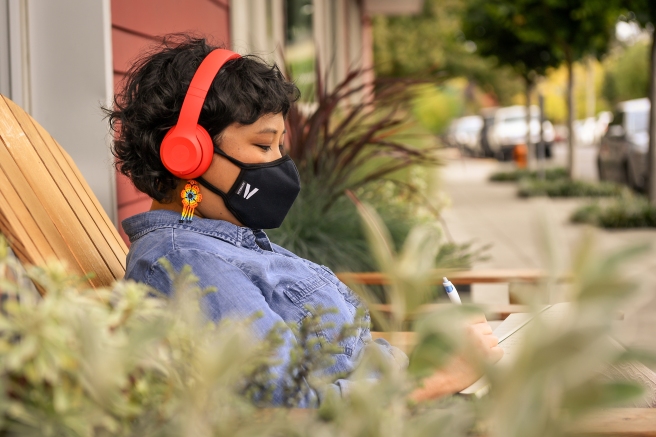
In light of this uncomfortable disconnect, for me wearing a mask is as much an act of persuasion as it is a direct health protection gesture, an attempt to aggressively denormalise the situation and remind the people I pass that the pandemic is still very much present and will probably get worse before it gets better. For all our cleverness we are in the end social primates, and we take our cues for behavioural norms from those around us. As well as reminding people of the gravity of the situation I hope that my mask makes people wonder whether they too should be wearing one. And I’m not alone in this. Professor Peter Piot, Director of the London School of Hygiene and Tropical Medicine nearly died of covid-19 and is now presumably at least temporarily immune and incapable of spreading it. However he still chooses to wear a mask to remind people of the severity of of the pandemic.
So why do those who could wear masks without discomfort or accessibility issues choose not to? I’ve seen memes blaming masks for “normalising fear”, which seems to be part of the idea espouse by Donald Trump that denying biological reality projects strength. But a virus won’t respect your refusal to be intimidated by it, it will infect you just the same. There’s a difference between fear and a healthy respect for an immutable scientific truth. Just as taking safety precautions around fire, knives or extreme weather when hiking isn’t “giving in to fear” but acknowledging the need to take care about things that can harm you, taking steps to minimise the spread of the virus is an acknowledgement that it can cause harm and a gesture of respect for your body and those of the people around you.
Unfortunately this idea that wearing a mask denotes fear or weakness dovetails very neatly with the model of masculinity we’ve constructed as a society that shames men for showing any hint of these traits, and it’s no coincidence that in places where facemask use is voluntary, men are less likely to wear them than women. The same study found that men were more likely than women to see wearing a face mask as “shameful, not cool, a sign of weakness” and that men were less likely to see themselves as vulnerable to the virus than women were which is particularly surprising given that all the demographic data we have on the virus indicate the opposite. There seems to be a recognised phenomenon occurring where the female member of heterosexual couples wears a mask while the male partner does not, and n South Korea, 42 of the 43 people who have been arrested for getting aggressive after being asked to wear a mask have been male.
“We all wear masks, and the time comes when we cannot remove them without removing some of our own skin.” – André Berthiaume
The way we present ourselves in public is part of the identity we construct. As an action that mildly inconveniences individuals for the greater public good, mask wearing also seems to correlate with where you fall on the political spectrum. In an ideal world adoption of a public health intervention should be evidence-based and politically neutral, but sadly that is not the world we live in. I have to acknowledge that as a left wing liberal I am in the core constituency for mask wearing, and that my hope that my own mask will influence others to adopt it is only likely to work on those who identify as part of the same “tribe” as me. I suspect masks will come to be seen like reusable tote bags or coffee cups – to those on the left a sign of concern for others, to those on the right a sign of smug “virtue signalling”. And in a world more sharply divided along these lines than ever I don’t know how masks could ever be made palatable to those who don’t believe protecting others should ever infringe upon their freedoms to do whatever they want. In the words of the now iconic article, I Don’t Know How To Explain To You That You Should Care About Other People.
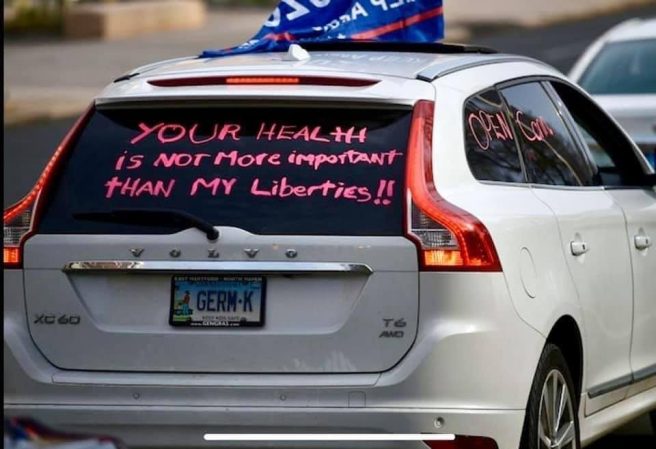
But perhaps the identities we project with the masks we wear offer scope for smarter people than me to change the narrative about face coverings. In the long term we need to dismantle toxic narratives about masculinity, but in the short term I wonder if masks can be made to appear tough and strong. There are any number of post apocalyptic films featuring mask wearing male characters, and I wish I’d asked for a photo of the punk I recently saw with his studs, chains and skull face mask. And I have to confess it isn’t just my political alignment that made masks an easy sell for me, but also my lifelong love of superhero comics. However it’s done though, I would like to see masks more widely worn in the UK.
Stay safe everyone.
